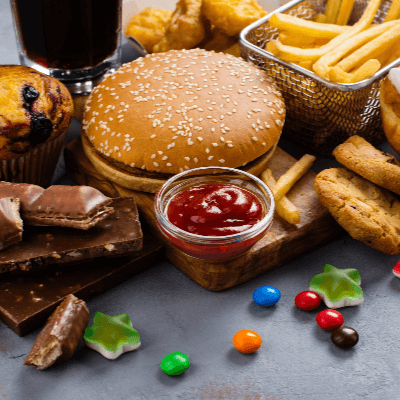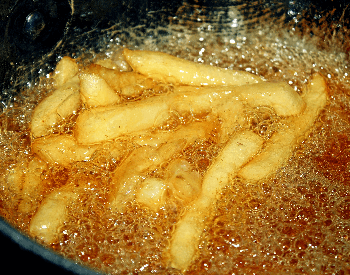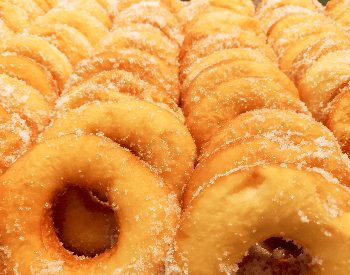
- Name: Fat, Fats
- Type of Food: Nutrient
- Sources: Meat and Vegetables
- Energy Produced: 37 (kilojoules) per gram
- Purpose: Provide energy, warmth and support cell
- Male Dietary Needs: Between 30% and 35% of daily calories
- Male Dietary Needs: Between 30% and 35% of daily calories
17 Fat Facts for Kids
- Fat is one of the three main macronutrients required by humans to properly grow and function.
- Fats are important to the human body; they provide energy and support the growth of cells. Fats also help keep your body warm, protects organs, helps absorb nutrients and assist in the production of hormones.
- The Dietary Guidelines for Americans, recommendations from the USDA and HHS states that between 20% and 35% of your daily calories should come from fats.
- Based on the Dietary Guidelines for Americans, if you’re eating 2,500 calories a day, between 500 and 875 of those calories should come from fats.
- Diets with more fat that recommended can result in weight gain, and ultimately obesity.
- There are four fats in the food we consume, and they are saturated, trans, monounsaturated and polyunsaturated.
- Foods with saturated fat are meats (beef, pork, lamb, veal and poultry skin), processed meats (hot dogs, pepperoni, salami, etc.), dairy products and baked goods.
- Foods with trans fat contain hydrogenated oils, like shortening, margarine (solid), coffee creamer (both solid and liquid) and prepackaged snacks.
- Foods with monounsaturated fat are plant-based, like avocados and oils (canola, olive or peanut).
- Foods with polyunsaturated fat are plant-based, like corn, nuts and soybeans.
- Polyunsaturated fat is very important to your body, it’s an essential fat because your body cannot make it.
- Monounsaturated fat can help improve your cholesterol level, which ultimately decreases the risk for many different cardiovascular diseases.
- Both polyunsaturated and monounsaturated fats are considered healthy when eaten in moderation.
- Fats are calories-dense, and a gram of fat contains twice as many calories as proteins and carbohydrates.
- To understand the calorie density of fats just look at a one teaspoon of butter compare to broccoli. One teaspoon of butter contains 45 calories, while one cup of broccoli contains only 31 calories.
- Another way to understand the density of calories is to compare one cup of butter to one cup of asparagus. One cup of butter contains a massive 1,627 calories, while one cup of asparagus contains only 27 calories.
- Fats can contribute to weight gain because such a small amount of food can contain a lot of calories. This enables you to eat large amounts of calorie dense food and not even feel full.
Pictures of Fats

A picture of french fries that contain saturated fat.Credit: Ghetty Images

A picture of glazed donuts that contain trans fat.Credit: Ghetty Images

A picture of an overweight adult from eating lots of fat.Credit: Ghetty Images
Additional Resources on Fats
- Fats and Cholesterol – Learn more about fats and cholesterol on the Harvard University website.
- Facts About Fat – Discover more cool facts about fat on the EUFIC website.
- Health Benefits of Fat – Find out the health benefits of carbohydrates on the Eat for Health website.
- Fat – Wikipedia – Read more about fats, its history and other facts on the Wikipedia website.
